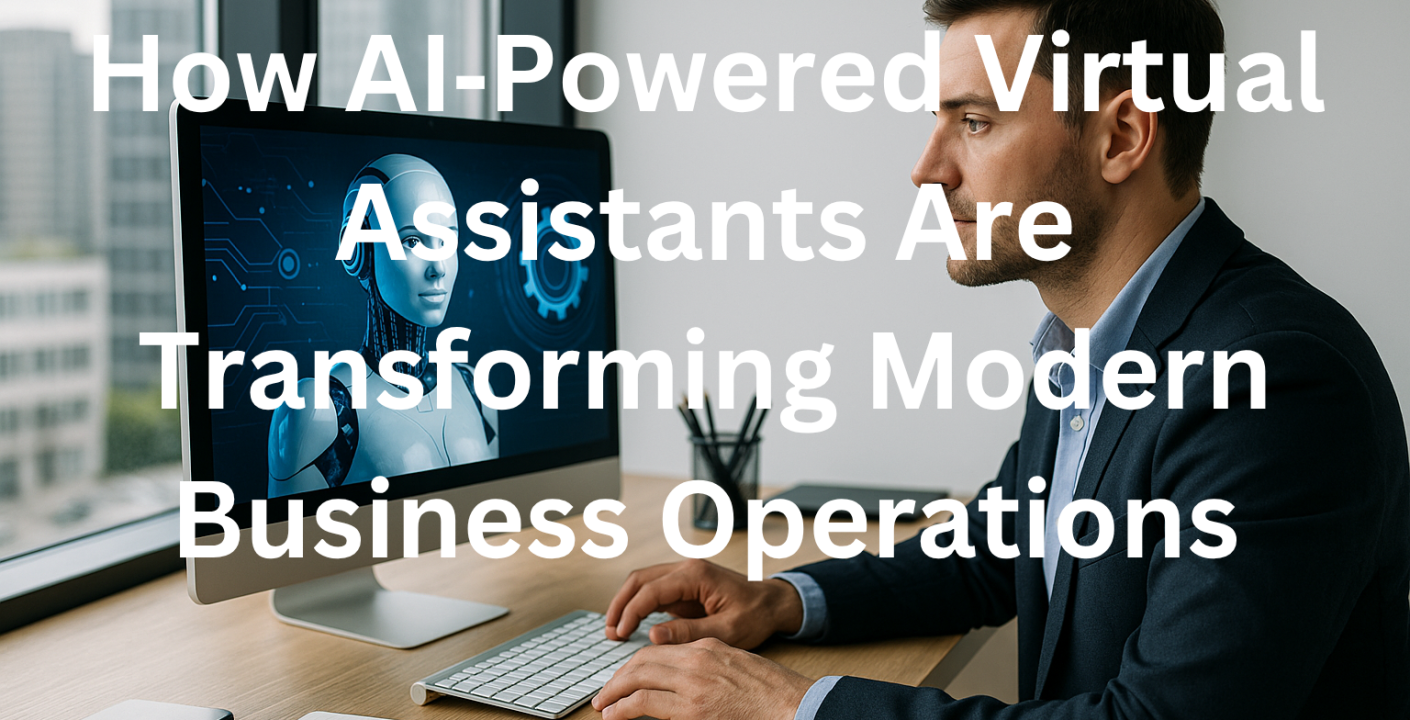In an era where speed, precision, and scalability define competitive advantage, AI‑powered virtual assistants have moved from experimental tools to essential components of everyday business workflows. For professionals and business owners seeking to stay ahead, understanding how these assistants reshape operations is no longer optional—it’s a strategic imperative.
1. The Rise of AI‑Driven Assistance
Over the past five years, advances in natural‑language processing, machine learning, and cloud integration have produced virtual assistants that can understand context, automate complex tasks, and continuously improve from interaction data. Unlike earlier rule‑based bots, today’s assistants—such as those powered by GPT‑4, Claude, or proprietary LLMs—offer:
- Conversational fluency across multiple languages.
- Task automation that spans email triage, calendar management, data extraction, and report generation.
- Seamless integration with CRM, ERP, project‑management, and collaboration platforms.
These capabilities translate directly into measurable business outcomes.
2. Core Business Functions Reinvented
| Function | Traditional Pain Point | AI‑Assistant Solution | Measurable Impact |
|---|---|---|---|
| Customer Support | Long response times, repetitive FAQs | 24/7 chatbots that resolve tier‑1 queries, route complex tickets | 30‑45 % reduction in average handling time |
| Sales Enablement | Manual lead qualification, fragmented data | Real‑time prospect scoring, automated outreach drafts, CRM updates | 20 % increase in qualified pipeline |
| Finance & Accounting | Invoice entry errors, time‑consuming reconciliations | OCR‑driven invoice parsing, expense categorization, predictive cash‑flow forecasts | 25 % faster month‑end close |
| Human Resources | Scheduling interviews, onboarding paperwork | Calendar coordination, document generation, policy Q&A | 15 % reduction in HR admin workload |
| Project Management | Missed deadlines, scattered status updates | Automated milestone tracking, progress summaries, risk alerts | 18 % improvement in on‑time delivery |
3. Why Professionals Choose AI Virtual Assistants
- Time Multiplication – Delegating routine tasks frees senior staff to focus on strategy, innovation, and client relationships.
- Cost Efficiency – A virtual assistant typically costs a fraction of a full‑time employee while delivering comparable output for defined processes.
- Scalability – As the business grows, the assistant scales instantly without additional recruitment cycles.
- Data‑Driven Decisions – Continuous analytics provide insights into workflow bottlenecks and employee productivity.
- Enhanced Accuracy – Machine‑learning models reduce human error in data entry, scheduling conflicts, and compliance checks.
4. Implementing an AI Virtual Assistant: A Practical Roadmap
- Audit Existing Workflows – Identify high‑volume, low‑value tasks that are prime candidates for automation (e.g., email filtering, meeting scheduling).
- Select the Right Platform – Look for providers offering secure, GDPR‑compliant solutions, robust API connectivity, and customizable prompts. Cicoor Sourcing specializes in tailoring assistants to fit your industry’s specific terminology and compliance requirements.
- Pilot Phase (2‑4 Weeks) – Deploy the assistant on a single department, monitor key performance indicators (KPIs) such as time saved, error rate, and user satisfaction.
- Iterate & Expand – Refine prompts, integrate additional tools (e.g., Slack, Microsoft Teams, HubSpot), and gradually roll out to other teams.
- Measure ROI – Compare baseline metrics with post‑implementation results to quantify cost savings and productivity gains.
5. Security and Compliance Considerations
- End‑to‑End Encryption – Ensure all data transmitted between the assistant and your systems is encrypted.
- Role‑Based Access Controls – Limit the assistant’s permissions to only the data it needs to perform its tasks.
- Audit Trails – Maintain logs of interactions for regulatory compliance and internal review.
- Data Residency – Choose providers that store data within jurisdictions aligned with your corporate policies (EU, US, etc.).
Cicoor Sourcing’s virtual assistants are built on a zero‑knowledge architecture, guaranteeing that no raw conversational data is ever accessible outside your organization.
6. Real‑World Success Story
TechCo, a mid‑size SaaS firm, integrated an AI‑powered virtual assistant to manage its sales pipeline. Within three months, the assistant handled 60 % of inbound lead qualification, scheduled demos automatically, and updated the CRM in real time. The sales team reported a 22 % increase in closed‑won opportunities, while administrative overhead dropped by 35 %.
7. The Future Landscape
As generative AI continues to evolve, we can expect virtual assistants to:
- Proactively suggest optimizations based on predictive analytics.
- Collaborate across departments through shared contextual memory.
- Offer multimodal interaction (voice, text, and visual dashboards) tailored to individual work styles.
Staying ahead means adopting these technologies now rather than waiting for the next wave.
Ready to Transform Your Operations?
If you’re a professional or business owner eager to harness the power of an AI‑driven virtual personal assistant, hire a dedicated assistant today. Our experts at Cicoor Sourcing will design, implement, and fine‑tune a solution that aligns perfectly with your objectives.
Take the first step now:
➡️ Contact us through our contact form
Let’s streamline your workflow, boost productivity, and give you the strategic freedom to grow—without adding a single extra hour to your day.






